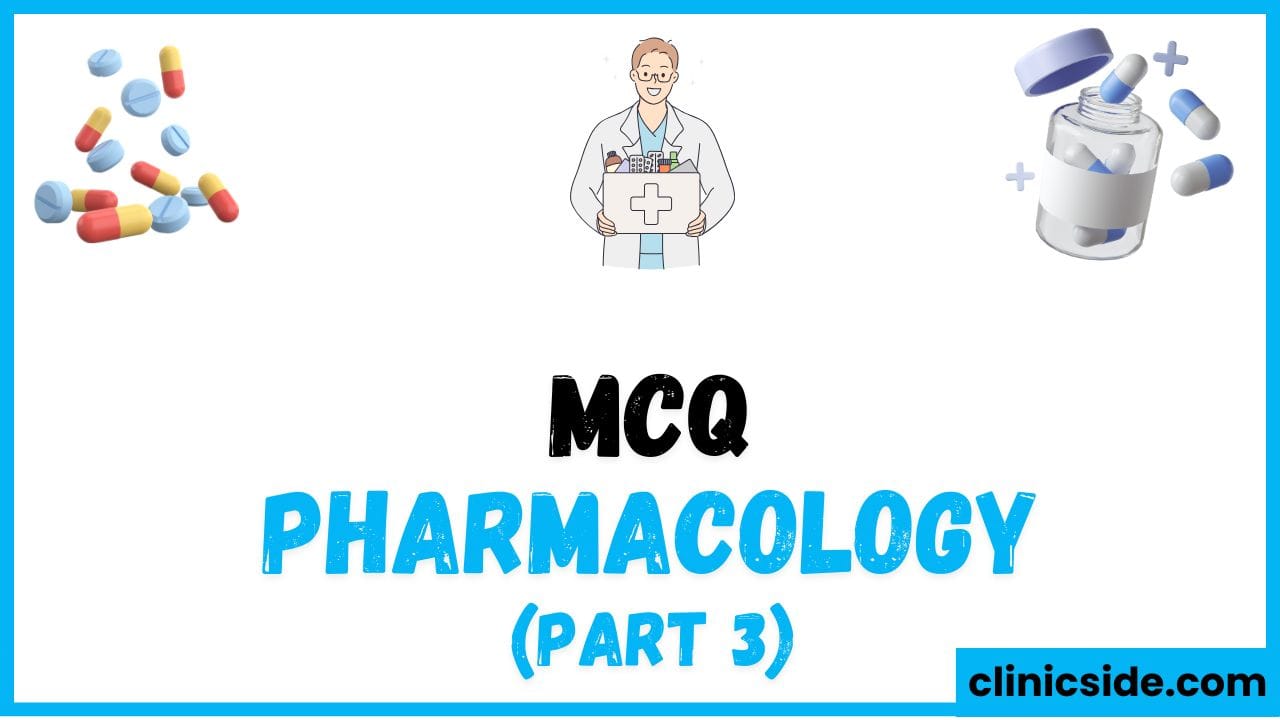Quiz
Available options: 1 to 20
Summary of Pharmacology MCQs
This summary presents a brief overview of essential pharmacological concepts, discussing the mechanisms, uses, and side effects of several commonly prescribed drugs. The following sections encapsulate key information drawn from multiple-choice questions related to drug actions, therapeutic indications, and potential adverse effects.
Action of Beta-Blockers
Beta-blockers are widely used to manage high blood pressure by blocking beta-adrenergic receptors. This action reduces heart rate and contraction force, helping to lower blood pressure. Additionally, these drugs are beneficial in treating heart failure and controlling arrhythmias by preventing excessive heart stimulation. Beta-blockers also decrease renin secretion from the kidneys, contributing to the regulation of blood pressure.
Medications for Hypertension
Hydrochlorothiazide, a thiazide diuretic, is often the first medication used in treating hypertension. It works by promoting the excretion of sodium and water, which reduces blood volume and lowers blood pressure. This drug is frequently combined with other antihypertensive agents to improve efficacy. Additional classes of drugs for managing hypertension include ACE inhibitors, angiotensin receptor blockers (ARBs), and calcium channel blockers.
Antidotes for Overdoses
In cases of acetaminophen overdose, N-acetylcysteine serves as the antidote. It helps replenish glutathione levels in the liver, allowing for the detoxification of harmful acetaminophen metabolites. For opioid overdose, naloxone is the treatment of choice. As an opioid antagonist, naloxone rapidly reverses respiratory depression caused by opioids like morphine and heroin, restoring normal breathing.
Loop Diuretics vs. Potassium-Sparing Diuretics
Furosemide is a loop diuretic that acts in the ascending loop of Henle to increase the excretion of sodium, chloride, and potassium. It is typically used in conditions such as heart failure, kidney disease, and edema. On the other hand, spironolactone is a potassium-sparing diuretic that blocks aldosterone receptors in the kidneys, promoting sodium excretion while conserving potassium. This makes it useful for managing heart failure and conditions with excess aldosterone.
Metformin in Diabetes Management
Metformin is a key medication in the treatment of type 2 diabetes. It reduces glucose production in the liver and improves the body’s sensitivity to insulin. Unlike some other diabetes drugs, metformin does not cause weight gain, making it a popular choice for managing blood sugar levels. It plays an essential role in controlling glucose levels and preventing long-term complications associated with diabetes.
COX-2 Inhibitors in Pain Relief
Celecoxib is a selective COX-2 inhibitor used to manage inflammation and pain, particularly in conditions such as osteoarthritis and rheumatoid arthritis. It works by inhibiting the COX-2 enzyme, which is involved in the production of prostaglandins that cause pain and inflammation. Compared to non-selective NSAIDs like ibuprofen, selective COX-2 inhibitors have a lower risk of gastrointestinal side effects, making them a preferred choice for long-term pain management.
Role of Epinephrine in Anaphylaxis
Epinephrine is the most effective treatment for anaphylaxis, a severe allergic reaction. It acts by constricting blood vessels to raise blood pressure, stimulating the heart to increase heart rate, and relaxing the smooth muscles in the airways to improve breathing. Epinephrine is administered via an auto-injector in emergencies to reverse life-threatening symptoms, such as low blood pressure and airway constriction.
Prodrugs and Liver Metabolism
Codeine is an example of a prodrug that is metabolized in the liver to produce its active form, morphine. This conversion is facilitated by the cytochrome P450 enzyme system. Once activated, morphine provides pain relief by binding to opioid receptors in the brain. The efficiency of this transformation depends on individual variations in liver enzyme activity, meaning some people may experience different effects from the same dose.
Antibiotics and Resistance
Penicillin is a bactericidal antibiotic that works by inhibiting bacterial cell wall synthesis, which leads to bacterial cell death. It is particularly effective against gram-positive organisms like Streptococcus. However, the overuse of antibiotics has led to increasing resistance, especially through the production of beta-lactamase enzymes, which render penicillin ineffective against certain bacteria.
Steroid Use and Associated Risks
Long-term corticosteroid therapy, such as with prednisone, can result in several side effects, with osteoporosis being one of the most significant. Corticosteroids interfere with calcium absorption, leading to decreased bone density. Other potential side effects include weight gain, increased infection risk, and mood changes. As a result, doctors often monitor patients on prolonged steroid therapy for these adverse effects and may recommend bone protection strategies like calcium and vitamin D supplementation.
Conclusion
This summary highlights crucial pharmacological concepts related to the actions, uses, and side effects of various drugs. Understanding how these medications work and the potential risks associated with their use is fundamental to effective clinical practice. From managing hypertension with diuretics to treating anaphylaxis with epinephrine, this information is essential for safe and effective patient care.






I have been surfing online more than 3 hours today yet I never found any interesting article like yours It is pretty worth enough for me In my opinion if all web owners and bloggers made good content as you did the web will be much more useful than ever before